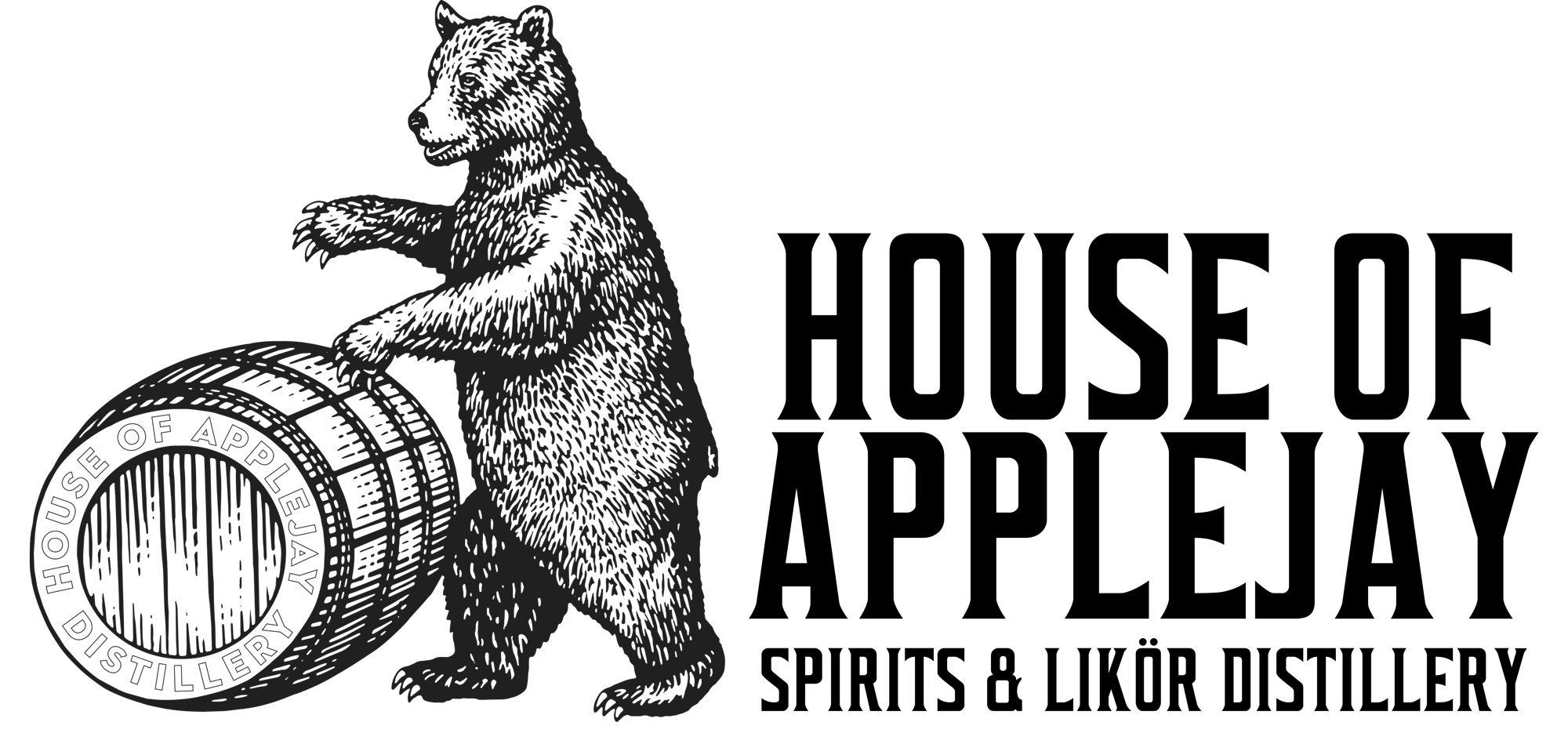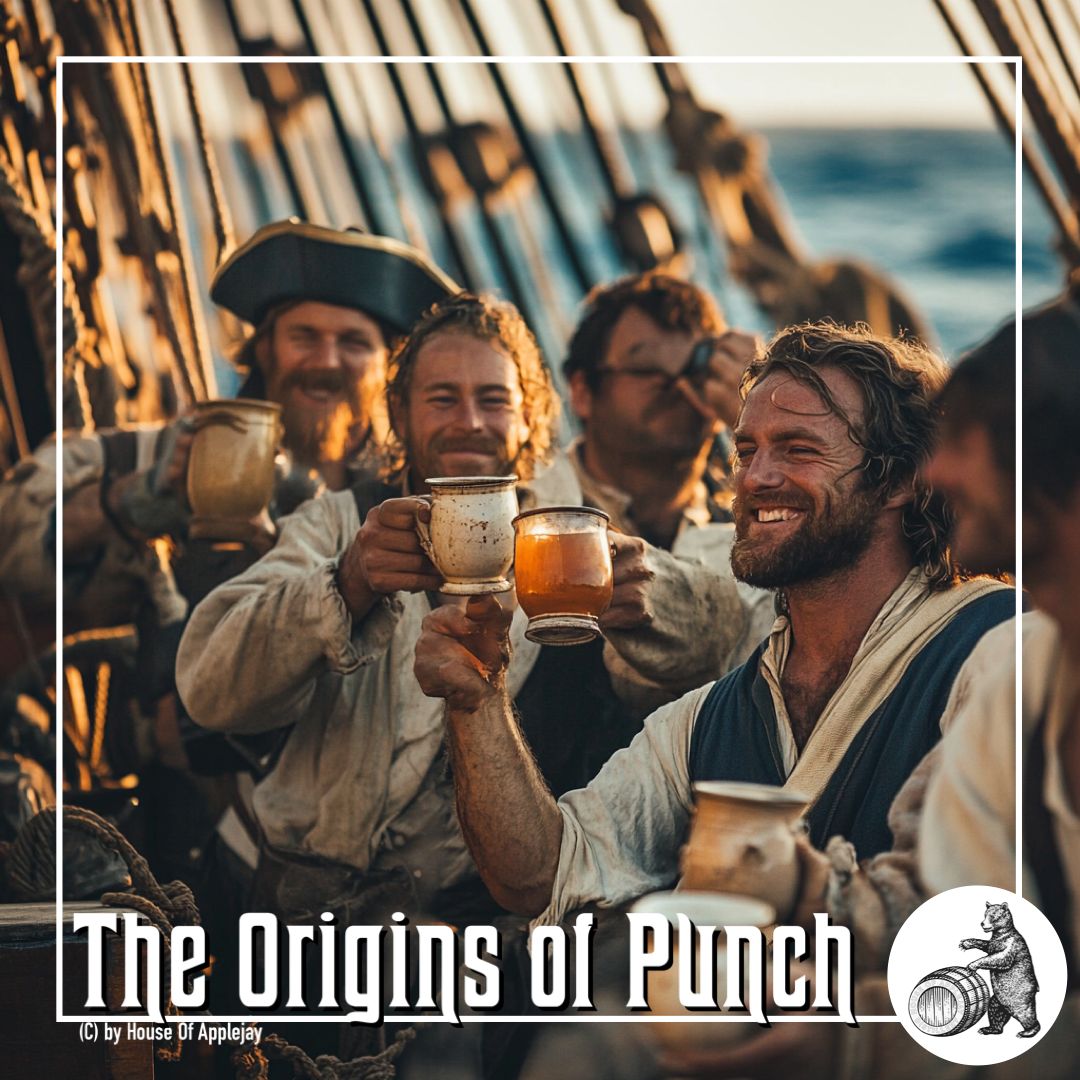The Origins of Rum Punch
How the Caribbean’s Boldest Spirit Conquered Colonial Punch Bowls
Rum punch is more than a refreshing cocktail; it’s a product of seafaring necessity, sugar-driven economies, and global cultural exchange. Born in the early days of colonial expansion and Atlantic trade, rum punch became one of the first truly international mixed drinks—shaping both maritime and colonial drinking traditions. Today, it’s making a well-earned comeback.
Origins: The Evolution of Punch
The word “punch” entered English around 1632, derived from the Hindi word panch, meaning “five”—a reference to the traditional five ingredients: spirit, citrus, sugar, water, and spice. The Indian tradition of panch likely dates back to the early 1500s, common among Mughal elites and Persian-influenced courts.
British merchants and East India Company officers, stationed in Surat (from 1612), Madras (1639), and Bombay (1661), encountered punch-style drinks during the first half of the 17th century. A letter from 1614 describes English factors enjoying drinks made from local arrack (a distilled spirit from coconut sap, sugarcane, or rice), mixed with lime, sugar, water, and nutmeg. These drinks were refreshing and better suited to the tropical heat than spoiled beer or wine.
By the 1630s, punch had made its way back to England’s ports, gentlemen’s clubs, and private dining rooms, where it quickly became a fashionable drink—often served in ornate bowls for communal enjoyment.
Rum Production in the Caribbean: From Sugar to Spirit
The English settled Barbados in 1627, initially growing tobacco and cotton. By the 1640s, sugarcane plantations took over, fueling the island’s economy. Richard Ligon, an English visitor from 1647–1650, described sugar refining in his 1657 book A True and Exact History of the Island of Barbados—noting molasses production and informal distilling practices, though no formal rum distillery yet existed.
The first documented commercial rum distillery in the Caribbean was Mount Gay Distillery, established in 1703 in northern Barbados. This marked a turning point: the emergence of consistent, export-ready rum that would soon define the region’s identity.
Rum Punch in the Caribbean
With rum flowing freely, and fresh citrus and sugarcane readily available, sailors and settlers in Caribbean ports like Bridgetown (Barbados) and Port Royal (Jamaica) began crafting a regional version of punch using local ingredients. A now-famous rhyme from Barbados defined the style:
“One of sour, two of sweet,
Three of strong, four of weak.”
That meant: 1 part lime juice, 2 parts sugar, 3 parts rum, and 4 parts water—finished with grated nutmeg. This structure became the foundation of Caribbean rum punch, balancing flavor, strength, and refreshment. It was practical for sailors (the citrus prevented scurvy), and hospitable for planters, who served it to guests with ceremony.
Planter’s Punch and Jamaican Influence
Planter’s Punch, a richer variation, likely developed in Jamaica in the 18th century. A version appeared in a poem in Fun magazine in 1878, indicating its popularity in Britain by the late 19th century. It was typically made with: Jamaican dark rum, Lime juice, Simple syrup or brown sugar, Angostura bitters, Optional fruit juices (orange, pineapple)
Planter’s Punch became a signature of West Indian estates and was served to guests as a symbol of colonial hospitality.
Colonial North America: Punch in Taverns and Drawing Rooms
By the early 1700s, rum punch was the drink of choice in the American colonies. Taverns in Boston, New York, and Charleston served communal punch bowls made with Caribbean rum, citrus, sugar, and spice. These bowls were often ornate and shared among guests as part of political debates, celebrations, or social rituals.
One iconic version was Fish House Punch, created in 1732 by the Schuylkill Fishing Company in Philadelphia. It included rum, cognac, peach brandy, lemon juice, and sugar. George Washington reportedly enjoyed it enough to leave a diary entry blank the next day—a playful historical note still cited today.
A 1738 Boston Gazette column described how tavern patrons were so enamored with punch that they forgot their political disagreements and toasted their rivals, revealing how punch could unite even opposing factions.
Milk Punch: A Colonial Curiosity
A lesser-known but elegant variation was Milk Punch, made by adding hot milk to a mixture of rum or brandy, sugar, and citrus. The milk curdled and was strained out, leaving a clear, shelf-stable beverage. This clarified style had a silky texture and a long shelf life—ideal for aging and bottling.
Benjamin Franklin included a Milk Punch recipe in a 1763 letter to a friend in England, showing how punch remained a part of elite drinking culture well into the Enlightenment.
Punched Historic Anecdotes
Captain’s Punch at Sea (1791)
A ship’s log from the Providence recounts a “Captain’s Bowl” mixed with Barbadian rum, lime, and nutmeg to celebrate surviving a violent Atlantic storm—a morale-boosting ritual among officers.
Tavern Performances (1738)
In Boston and Charleston taverns, the size of the punch bowl reflected one’s status. Bowls were passed between political foes and friends alike. “Men forgot their votes and toasted their rival candidates,” wrote one newspaper columnist.
Plantation Hospitality (1831)
English visitor Thomas Harding wrote from Spanish Town, Jamaica, that “the punch bowl arrived before the host” during a formal estate visit, signaling the drink’s role as a cultural fixture of welcome.
Punch Today: A Revival in the Glass
While punch faded from favor in the 20th century—eclipsed by single-serve cocktails and convenience culture—it’s returned in full force thanks to the craft cocktail renaissance.
Inspired by historians like David Wondrich, bars across the U.S. and Europe have revived punch menus. Clarified Milk Punches, vintage rum punches, and historic recreations now appear at venues like: Death & Co. (New York City), Punch Room (London & Charlotte, NC), Lost Lake (Chicago), Maison Premiere (Brooklyn). These contemporary creations preserve punch’s original purpose: to be shared, enjoyed slowly, and remembered fondly.
Conclusion: The World in a Bowl
From the Mughal courts of 16th-century India to Caribbean sugar estates, from Boston taverns to 21st-century speakeasies, punch has traveled far and evolved often—but never lost its soul. More than a drink, it’s a ritual of togetherness, a liquid archive of history, and the ancestor of the modern cocktail.
Unlike today’s cocktails, which are made to order and served individually, punch began as a communal drink—crafted in large bowls, shared at social gatherings, and prepared in advance with five carefully balanced elements. It wasn’t about speed; it was about ceremony and community. The cocktail may be its descendant, but the punch bowl was its beginning. Today, rum punch lives on—not just in tropical getaways, but in high-end bars, house parties, and heritage menus. It offers more than refreshment; it offers connection, reminding us that the best drinks are meant to be shared, savored, and steeped in story.
The Distilling Culture
BLOG
Embark on a global journey, and you’ll find that cultures possess tales that harken back to their ancient beginnings of distillation, brewing, and winemaking.
info@houseofapplejay.com
67 Fowler St, Bldg B, East Ellijay, GA 30540

